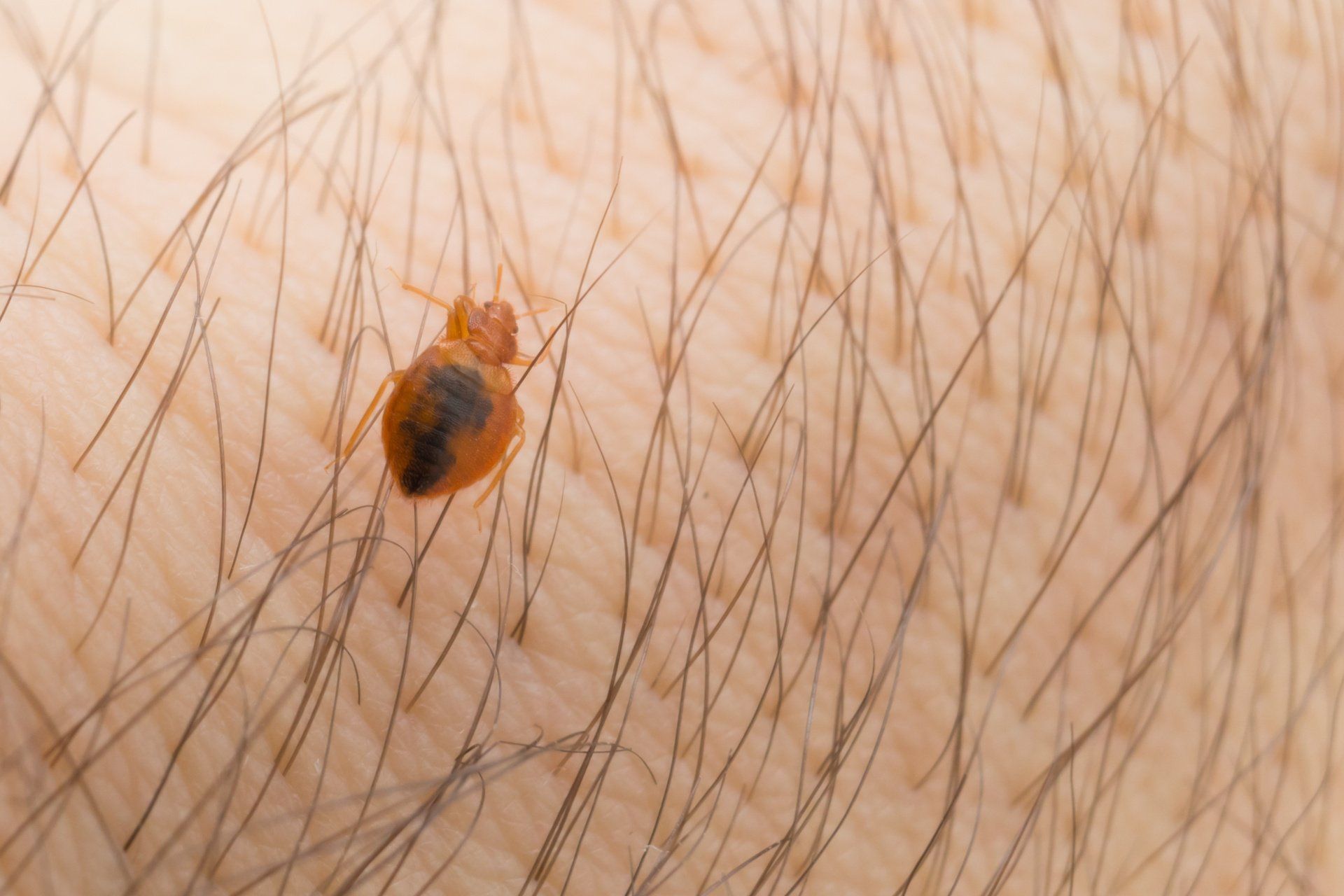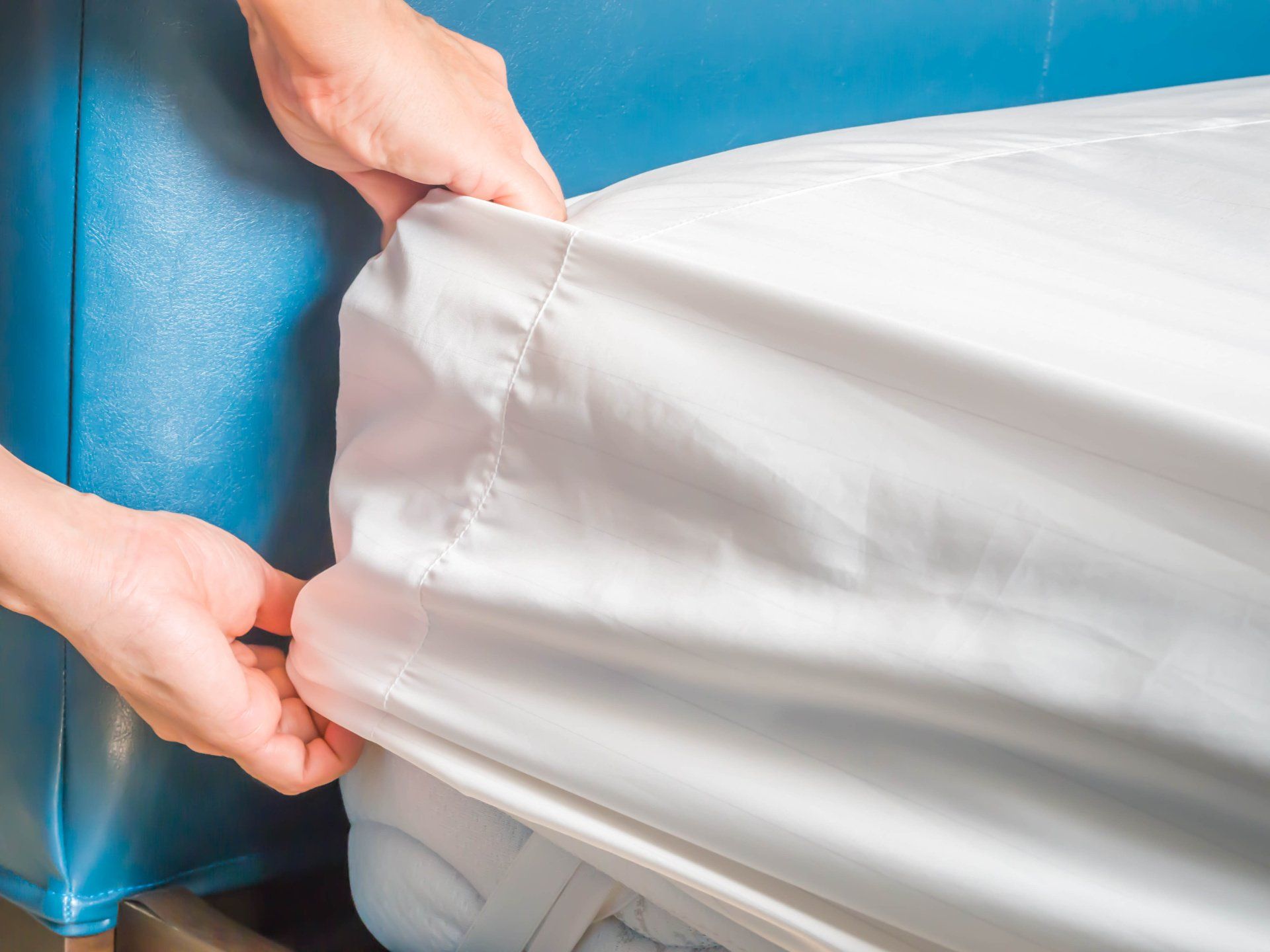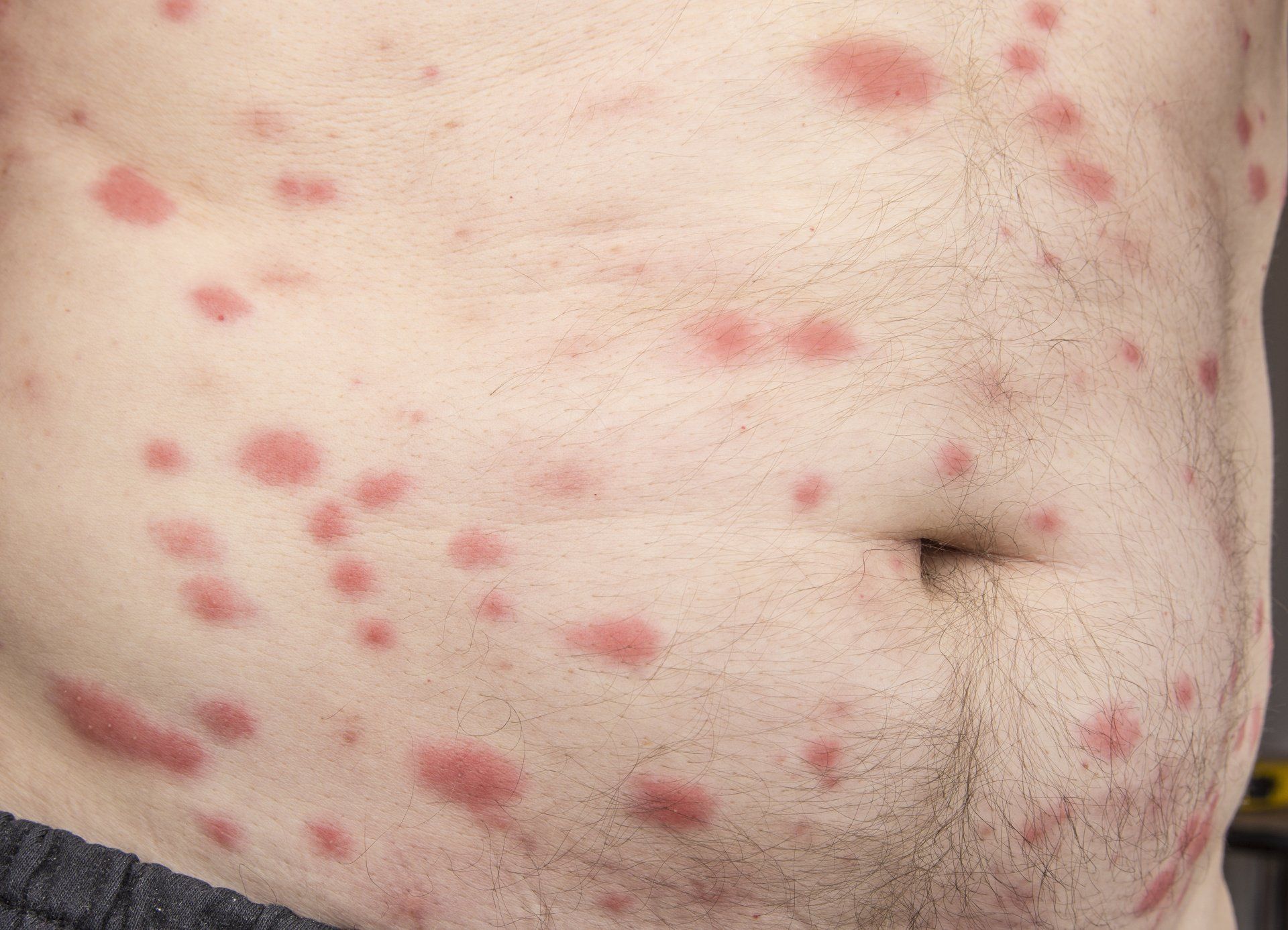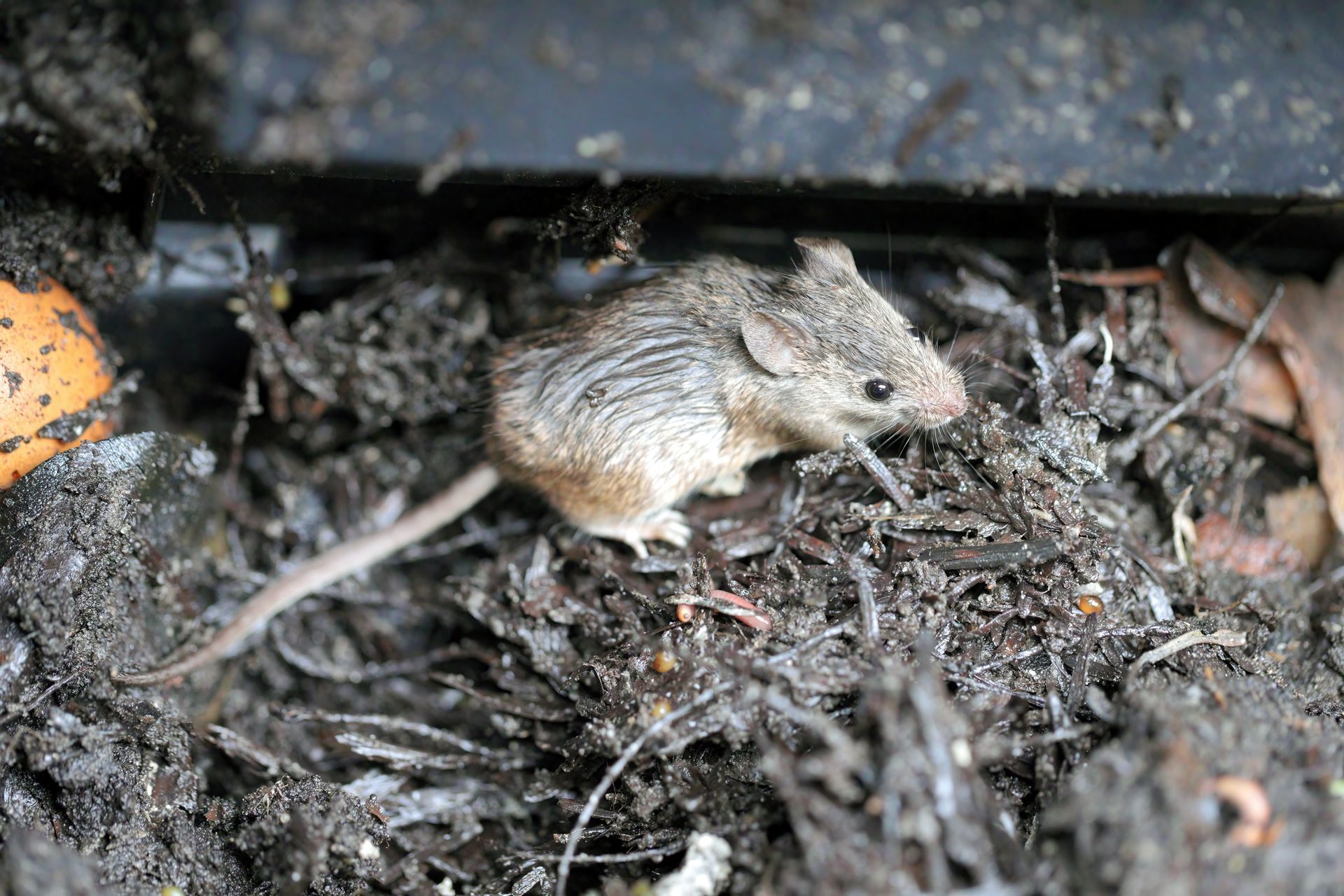Signs Of Bed Bugs
How To Tell If You Have Bed Bugs

- Active bed bug populations
- Red stains on mattresses or bed sheets
- Small black spots that are bug excrements that tend to bleed like a marker
- Bites and crawling feeling on your body after laying in your bed or sleeping
- Bedbug eggshells, or shed skin in your bed
- A foul odor coming from bed bug’s scent gland
How to Spot a Bed Bug
Bedbugs are small brownish, oval insects. In order to survive, these insects feed on the blood of humans and animals. Before feeding, adult bed bugs have flat bodies and are a little smaller than a watermelon seed. However, after feeding these bugs grow in size and turn red from consuming blood.
Luckily, bed bugs cannot fly. These bugs can move quickly however over ceilings, floors, and walls. Female bed bugs lay eggs that are as small as a speck of dust and can lay over hundreds of eggs in their lifespan.
Beg bugs that are not fully mature are called nymphs and require a blood meal every time it needs to grow into the next phase of its life cycle. These nymphs shed about 5 times during their lifespan before they mature. If the nymph is living under good conditions, they are able to develop in as quick as a month and have the ability to produce at least three generations a year.
How to Find Bed Bugs
If you have a bed bug infestation, it is always best to try and solve the issue as quickly as possible. This means it is essential to know how to properly find your bed bug infestation. It is always easier and less money to treat a minor bed bug infestation.
Smaller infestations are much more difficult to find, and you can miss signs of bed bugs all together. If you do end up missing the problem until they have had a chance to grow in population, this gives the bed bugs more time to hitch a ride on another area of your house or spread to someone else’s house.
Having bites on your skin can also lead to false identification because beg bug bites look similar to other insect bites such as mosquitos or skin rashes like eczema. In rare cases, some peoples’ skin does not react at all to bug bites.
Tips for identifying bed bugs:
- They have small wings, but they cannot fly, if they do fly, they’re not bed bugs
- Adults are flat before feeding, and nymphs are pale in color.
- All stages of growth increase in size and turn red after feeding
- They have 6 legs and 2 antennae
- Bed bugs have a small narrow head and a wide body
- Bed bugs like to hide in the seams of mattresses, the folds of curtains, and in the joints of furniture. They tend to be found in in cracks behind drawers, baseboards, and bed frames.
- Bed bug indicators are also a helpful tool to help identify bed bugs
Where Bed Bugs Hide
Bed bugs can go for a long time without a blood meal and can hide just about anywhere which is what makes these bugs very hard to exterminate. They are mostly found within 8 -15 feet of their food source so check the creases and seams of your mattress and in the folds of the canvas wrapping your box spring. Bed bugs are also known to crawl into the cracks in between wooden joints, open screw holes, and electrical appliances. Since bed bugs are about as thin as a credit card, it is easy for them so slip into any crack or crevice.
When Bed Bugs Bite
Bed bugs are most active at night and tend to bite people the most when people are going to sleep. Bed bugs feed by piercing the skin and withdrawing blood from an elongated beak. Bed bugs feed until they’re completely filled, and this typically lasts for 3 to 10 minutes. When humans are first bitten by bed bugs their bites are painless. Later on, these bites become itchy welts. Bed bugs will feed on any area of skin that is exposed while sleeping. Unlike flea bites, these bites do not have a red spot in the center. It is crucial to properly identify your bites as bug bites, and not just assume they’re flea or mosquito bites.
Characteristics of Bed Bug Bite
- Small itchy red bumps that mysteriously appear at night
- Most common areas for bed bug bites are the arms, hands, and legs
- Can appear in clusters of 3 and 4
Pest control professionals agree that bites alone are not the way to properly diagnose your bed bug problem. It is too difficult to distinguish bed bug bites from other insect bites. That being said, 30% of people don’t exhibit any skin reactions to bed bug bites.
Bed bugs do not carry harmful diseases; however, some people are allergic to the chemicals in bed bugs saliva. If you’re experiencing flu like symptoms after being bitten by a bed bug, seek medical attention immediately.
Bed Bug Behavior and Habits
Understanding how bed bugs eat, live and produce is critical when it comes to finding an infestation before it grows.
Feeding:
- Will feed on other animals and mammals as well as humans
- Can travel 5-20 feet from harborage areas to feed on a host
- Can feed at night and during the day
- Feeding lasts around 3-12 minutes
Living Conditions:
- Bed bugs can survive in temperatures up to 7 degrees Celsius but will not survive 45 degrees Celsius
- Common bed bugs are almost anywhere their host can live
- Tropical bed bugs live in higher temperatures and are usually only found in tropical locations
Bed Bug Treatment
It is important to clean up where all the bed bugs live, and do the following:
- Clean bedding, curtains, linens, and clothing in hot water and make sure to dry them on the highest drying setting for at least 30 minutes. Any other item that could have gotten exposed to the bugs such as pillows, stuffed, animals, etc., should all be washed as well.
- Use a hard bristle brush to thoroughly scrub mattress seams before vacuuming
- Vacuum your bed and the area surrounding your bed as much as possible and throw away the vacuum cleaner bag immediately after putting it in a plastic bag.
- Get rid of cluster and messes around your bed
- Repair all cracks and glue down peeling wallpaper
- Encase mattress and box spring with a covered zipper to keep bed bugs from escaping or entering. Bed bugs may live up to a year without feeding, so it is crucial to keep the cover on your mattress for at least a year.
Call EcoGuard Bed Bug Exterminators Today!
Bed Bugs are hard to get rid of. They usually involve using a very strategic approach that requires using different methods to fully remove the bed bugs from your home once an infestation is present. This is why it is important to contact a trained professional that knows what they’re doing and can help fix the issue and alleviate any stress that the bed bugs have caused. EcoGuard Pest Management has the experience and knowledge to ensure that all signs of bed bug activity are eliminated as soon as possible. Call today to schedule a free inspection.




















